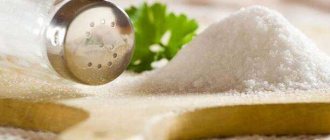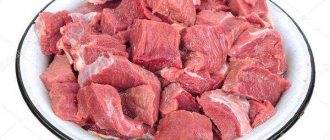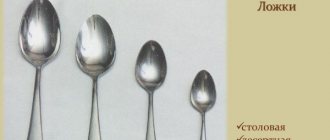Soy sauce: what is it, what is it made from?
Soy sauce is a popular culinary additive that has long been no longer associated only with Asian cuisine. Almost every modern housewife has used soy sauce at least once to prepare marinades, first and second courses, salad dressings and other sauces. It is almost impossible to find an analogue to the taste of soy sauce.
Soy sauce first appeared in Asian cuisine (China, Japan, India) and only in the 17th century did Europe learn about it. At its core, soy sauce is a fermentation product that occurs as a result of the fermentation of soybeans. This happens with the participation of a special fungus – aspergillus. The result is a liquid that is quite dark in color and has a characteristic mushroom aroma.
IMPORTANT: In modern cooking, there are several types of soy sauces and each has its own preparation process. The most important quality that a sauce should have is naturalness, which means that no chemistry is welcome in it.
Soy sauce has one advantage over other dressings and sauces - it contains glutamic acid. This is a natural component that can enhance and emphasize the taste of dishes: meat, fish, vegetables. In addition to all the advantages, it is also worth noting the low calorie content of the sauce, because it is only 50 kcal per 100 ml of sauce. Natural sauce (not obtained chemically) contains a large amount of monosaccharides and polysaccharides, as well as other trace elements.
Soy sauce is allowed to be consumed by those who adhere to a healthy diet and do not want to eat a lot of salt. Soy sauce becomes a dressing and seasoning for various dishes in small quantities, but in large quantities this sauce is simply not eaten. And it’s also worth remembering that excessive consumption of soy sauce can still be harmful to your health.
When choosing this product on a store shelf, carefully study the label and composition. The fact is that there are a lot of cheap fakes of soy sauce at the moment. Such “sauces” are made from salt, preservatives, flavorings and aromas. Natural sauce is always produced in small portions and only in glass bottles. Natural sauce is always transparent and will not have any sediment at the bottom.
IMPORTANT: Natural healthy sauce will never contain “E” additives, vinegar, yeast, sugar and other preservatives, but should only contain soy and salt. Another secret to determining the quality of the sauce is its rich protein content (at least 5-6 g). Natural sauce will be much higher in price than its artificial counterpart.
Soy sauce is a product of soybean fermentation
How can you replace salt during a diet?
The amount of salt in food should be reduced gradually. This will help the body avoid stress and breakdown.
To prevent food from seeming bland, you can replace regular salt with sea, Himalayan or iodized salt. It is suitable for the transitional stage, gives food a pleasant taste and aroma, and also contains useful substances.
This is interesting!
Regular salt undergoes processing, after which it loses most of its nutrients.
When losing weight, it is better to replace regular spices with sea spices. Large crystals are evaporated from sea water using a natural method. They are rich in more than 50 useful substances, including potassium, magnesium, and calcium.
An even better alternative is pink or black Himalayan salt from Pakistan. It smells nice, contains 84 microelements, but is expensive.
It will be useful for those losing weight to know whether salt can be replaced with soy sauce. This is possible, the main thing is to remember that this liquid also contains sodium chloride. It is also recommended to reduce the caloric content of the diet, reduce the amount of foods rich in salt and fat. A high-quality product based on natural ingredients is suitable for the diet.
You can replace table salt with kelp, celery, ginger, garlic, various spices, herbs, citrus-based marinades, natural vinegar, etc.
The optimal amount of salt substitute is 1 pinch per serving. At first, the food will seem a little bland, but over time the taste buds will get used to it.
Soy sauce
Soy sauce is especially popular among those losing weight. However, it already contains a little salt.
Important!
The optimal daily dose for weight loss or proper nutrition is up to 30 ml.
If you choose which is better - salt or soy sauce, then the second product definitely wins. It reduces the risk of cancer, rejuvenates the body, normalizes blood circulation, the functioning of the heart and blood vessels. Soy sauce is rich in amino acids, micro- and macroelements, and vitamins. But to get the benefits, you need to choose a high quality product. It contains nothing but soybeans, wheat, water, and a small amount of salt. If there are flavor enhancers, flavorings or other chemicals, the product should be discarded. The liquid has a rich aroma and taste.
Kelp
Sea kale, or kelp, is a brown algae that contains a lot of iodine. This supplement improves digestion, saturates cells with beneficial substances (laminarin, algin, ascorbic acid, B vitamins, macroelements). It is added to the diet for the prevention of endemic goiter, atherosclerosis, normalization of intestinal function in case of chronic constipation, colitis, proctitis, etc.
Kelp has a salty taste and marine aroma. Fresh or dried seaweed is suitable for those losing weight. A canned product is not suitable for this purpose, as it loses its beneficial properties after heat treatment.
Salads are often prepared from fresh seaweed; they can also be combined with vegetables, meat, fish, and seafood. Dry kelp is ground in a coffee grinder. The powder is sprinkled onto finished dishes. It is also soaked in water, and then cut and added to salads or other dishes.
Celery and ginger
Celery is an excellent substitute for salt - it is a flavorful vegetable with a negative calorie content. The product is rich in sodium, so it has a salty taste.
During a diet or proper nutrition, the plant is eaten fresh or dry. The vegetable stems are peeled, finely chopped and dried at a temperature of 42 degrees. For this purpose, it is most convenient to use a special dryer or dehydrator, which evenly dehydrates pieces of vegetables, maintaining a certain temperature regime.
Pieces of dry celery are stored in glass containers. Before use, it is crushed, and then the powder is sprinkled on finished dishes.
Celery is rich in nutrients and goes perfectly with salads.
Instead of regular salt, you can use ginger root. The fiery seasoning gives dishes a spicy taste.
When dieting, dishes are supplemented with fresh or dry ginger. In the first case, the root is peeled, cut into slices or crushed using a grater, in the second, it is chopped and dried. The dishes are also complemented with ground ginger. The spice tones the body, gives vigor, improves memory, concentration, and performance.
Garlic
Garlic will help make food taste richer without salt. This vegetable has a bright taste and aroma, especially when fresh.
Garlic is rich in vitamins, minerals, and antioxidants. When consumed regularly, it helps prevent a number of heart and vascular diseases. The vegetable has anti-inflammatory, moderate diuretic, anti-aging, and antitumor effects. It improves immunity and normalizes the functioning of the digestive tract.
Fresh garlic is sliced or pressed to complement prepared dishes. The dried vegetable has a milder taste, so it is more suitable for people who frequently come into contact with others. Often dishes are supplemented with garlic powder.
This is interesting!
A stalk of parsley or mint will help remove the aroma of garlic. To neutralize the unpleasant odor, use milk or freshly squeezed citrus juice.
Seasonings
When dieting or eating properly, salt is replaced with fragrant spices. They are aromatic, beneficial for the body, and add new notes of taste.
Seasonings that can replace salt:
- Bitterish dry onion powder has antibacterial and antifungal effects and improves immunity.
- Hot black pepper demonstrates anti-inflammatory, antioxidant effects, normalizes blood pressure, and relieves swelling.
- Spicy, bitter oregano is a natural antiseptic.
- Bittersweet, slightly spicy cumin will prevent atherosclerosis.
- Anise has a specific sweetish, refreshing taste and spicy aroma.
These seasonings perfectly complement meat, fish, vegetable dishes, desserts, and drinks.
You can replace salt with turmeric, cumin, rosemary, cilantro, coriander, thyme, dill, parsley, tarragon, etc. Dry vegetables, for example, tomatoes, paprika, mushrooms, and onions, perfectly complement dishes.
Lemon juice or natural vinegar
A universal salt substitute for weight loss is citrus fruits. Dishes are supplemented with zest, juice or pulp. Lemon juice is most often used to dress salads. It is often supplemented with spicy spices (cardamom, cumin, fennel, etc.). Lemon gives a pleasant sourness, freshness, and also saturates with vitamin C, cleanses the body of harmful accumulations.
Vinegar is no less popular for seasoning meat, fish, and vegetable dishes. When losing weight, you can supplement your food with apple, rice, wine, and balsamic vinegar. And fragrant herbs make the taste and aroma even more unique.
Carefully!
You should not overuse vinegar if you have stomach or intestinal diseases.
Composition of real soy sauce: description, ingredients
As already mentioned, soy sauce in moderation can provide great benefits to a person. The reason for this is the rich composition of many microelements. natural soy sauce has nothing but fermented soybeans, water and salt. Consequently, the chemical composition of the product will be very similar to that of soybeans.
| Name of trace element in soy sauce | Benefits of the substance for the body |
| Vitamin B1 | Participates in all metabolic processes of the body: protein, lipid, water-alkaline |
| Vitamin B2 | Helps synthesize all substances in the body: vitamins, amino acids, fatty acids |
| Vitamin B5 | Helps body cells produce energy |
| Vitamin B6 | Helps break down amino acids |
| Vitamin B9 | In other words, “folic acid” is a fighter for the health of the reproductive organs and good mood. |
| Vitamin PP | In other words, “nicotinic acid” is involved in the body’s metabolic processes, carbon and protein metabolism. |
| Kholin | Regulates the functioning of the nervous system |
| Sodium | Regulates water-salt metabolism |
| Potassium | Regulates the amount of fluid in tissues |
| Phosphorus | Nourishes the skeletal system and strengthens it |
| Calcium | Supports healthy bones and teeth |
| Magnesium | Participates in metabolic processes, helps other substances be absorbed |
| Iron | Increases hemoglobin in the blood |
| Selenium | Improves the condition of hair, nails and skin |
| Zinc | Essential for the health of the reproductive organs of men and women |
| Copper | Regulates the functioning of the gastrointestinal tract, improves blood quality, as well as the functioning of the nervous system |
| Amino acids | Keeps the human body young and healthy |
What is soy sauce made of?
Nutritional value of tamari soy sauce per 100 g.
| Name | Quantity | Percentage of daily value, % |
| Carbohydrates | 4.8 g | |
| Sugar | 1.7 g | |
| Protein | 10.5 g | |
| Fats | 0.1 g | |
| Dietary fiber (fiber) | 0.8 g | 4 |
| Vitamin B6 | 0.2 mg | 16 |
| Calcium | 20 mg | 2 |
| Iron | 2.4 mg | 30 |
| Magnesium | 40 mg | 12 |
| Manganese | 0.5 mg | 25 |
| Phosphorus | 130 mg | 13 |
| Zinc | 0.4 mg | 3 |
| Copper | 0.1 mg | 7 |
| Selenium | 0.8 mcg | 2 |
| Thiamine | 0.1 mg | 4 |
| Riboflavin | 0.2 mg | 9 |
| Niacin | 4 mg | 20 |
| Folate | 18 mcg | 5 |
| Kholin | 38.4 mg | 7 |
Soy sauce: benefits and harms for men and women
Soy sauce is rich in antioxidants, which have a positive effect on the entire body, prolonging its youth and improving health. Another property of antioxidants is to “slow down” cell aging and fight cancer. Therefore, we can safely say that by consuming soy sauce, you will have a comprehensive effect on your body: headaches will go away, blood pressure will normalize, eliminate insomnia, ease muscle spasms, reduce swelling and relieve fatigue after physical exhaustion.
INTERESTING: It is important to note the presence of phytoestrogens , substances extremely useful for women, especially those experiencing hormonal surges: menopause, PMS, disorders.
Soy sauce contains a large amount of vegetable protein (about the same as that found in meat). This is good for those who are allergic to animal protein or for people following a vegetarian diet. However, this only applies to sauce that is not made chemically. Artificial soy sauce does not bring any benefit, but only gives taste sensations and harm.
On the other hand, soy sauce (like soy) contains substances such as isoflavones. They are known to negatively affect the quality and quantity of sperm in men. Therefore, to some extent, we can say that soy sauce is harmful to “men's health.” However, this is true when a person consumes it in excessive quantities.
IMPORTANT: Excessive consumption of soy sauce analogues is harmful because they contain a lot of salt, which disrupts water-salt metabolism in the body, provokes swelling in the extremities and an increased feeling of hunger during the day.
Does soy sauce benefit or harm the body?
What are the benefits and harms
13 Apr 2021
Just a few years ago, when our country was just discovering the joys of Japanese cuisine, almost all nutritionists recommended replacing our usual salt with the newfangled soy sauce. Today there are fierce debates about this. Let's try to figure out whether the sauce is good for our body.
Real soy sauce is a completely natural product.
The slightly viscous, dark-colored liquid is the result of a long fermentation process of soybeans under the influence of a special variety of mushrooms.
Although this cooking method takes quite a lot of time, technologically it is completely simple. The best soy sauce makers still use ancient methods and recipes.
Soy sauce is a real storehouse of various amino acids and antioxidants. These substances help our body cope with the constant attack of free radicals, which are the cause of diseases such as cancer and Parkinson's disease. They are also excellent helpers in the fight against infectious diseases.
Many nutritionists also talk about the benefits of natural soy sauce. It is relatively low in calories (only 70 kilocalories per 100 grams), so it is an excellent alternative to mayonnaise and fatty creamy sauces.
If you want to shed a few extra pounds, choose a low-sodium sauce. The less salt in the sauce, the less likely it is to retain excess fluid in the body.
And this, as is known, leads to a slowdown in metabolism and a gradual increase in body weight.
Unfortunately, buying the “right” soy sauce can be quite problematic. The modern food industry cannot keep up with the growing demand for food, so many ancient technologies are being simplified.
Most of the sauces that are available in our stores today bear little resemblance to traditional Asian seasoning. They are prepared either from a special concentrate or by using chemical components.
They contain many ingredients, the names of which are even difficult to read! Such sauces will definitely not benefit your body.
At the very beginning of the 2000s, an event occurred in the world known as the “soybean scandal.”
A study of the most popular soy sauces in the USA, Canada, Europe and Australia showed that their composition exceeded the permissible level of chloropropanol content many times over.
This substance is one of the strongest carcinogens! So when shopping, take a few minutes to read the label and choose the most natural product. This way you can enjoy the amazing taste of the sauce without harming your health.
But if abused, even the highest quality sauce can cause harm to the body. After all, it contains salt, and its excessive consumption has a detrimental effect on the functioning of all systems of our body.
This is the amount of sauce that will give your dish a piquant and slightly salty taste without harming your health.
- Package. The best soy sauces are always sold exclusively in glass bottles. Most often, sauces in plastic containers are surrogates.
- Label. If you see the inscription “made by natural fermentation,” then this is a quality product. Words such as “artificial” and “substitute,” on the other hand, should alert you.
- Color. Natural soy sauce is usually light brown in color. A dark brown or black color indicates a low-quality product. The best way to see the color of the sauce is in bright light.
Thus, moderate consumption of high-quality and natural soy sauce will not harm your health at all.
On the contrary, regular use of such a product and replacing salt and other harmful seasonings with it will help you not only lose a few kilograms, but also improve the functioning of many body systems.
The composition contains antioxidants that contribute to:
- strengthening the immune system;
- eliminating the causes of diarrhea;
- normalization of blood circulation;
- providing a therapeutic effect in cardiovascular diseases;
- combating degenerative pathologies of the nervous system.
In addition, niacin or vitamin B3 has a beneficial effect on the condition of the heart muscle and reduces the level of bad cholesterol in the blood.
Researchers at the University of Missouri conducted a clinical study looking for answers to the question of how soy sauce benefits women. During laboratory work led by the lead author of the scientific project, Professor Pamela Hinton, it was found that due to the presence of powerful phytoestrogens, the product is capable of:
- reduce the risk of developing postmenopausal osteoporosis;
- prevent the occurrence of breast cancer;
- prolong skin youth;
- delay the appearance of facial wrinkles;
- relieve painful menstruation;
- alleviate the symptoms of menopause.
Women over 35 years old are recommended to include soy sauce in their daily diet in small quantities.
University of Missouri (USA)
Is it possible to eat soy sauce during pregnancy?
Pregnancy is a special situation for a woman, when she should be very careful and careful about her health. Very often, a pregnant woman’s body suffers from disturbances in water-salt metabolism, and this happens because the use of salt “inhibits” the release of fluid and it accumulates in the soft tissues.
It is quite possible to completely replace salt during pregnancy with soy sauce, which also has a pleasant taste and saltiness. Of course, we are talking only about a natural product without preservatives and chemicals. Natural soy sauce may well become a “healthy dressing” for salads and a seasoning for meat and other dishes.
You should choose the sauce with special attention, carefully studying the label. On the jar, look for the inscription “fermentation product” or “aging product.” Analogues of soy sauce should not be consumed during pregnancy, they can provoke disorders of the gastrointestinal tract, metabolism, cause poisoning and lead to swelling.
IMPORTANT: Natural sauce is also useful during pregnancy because it can saturate a woman’s body with essential vitamins and minerals, as well as antioxidants.
Is it possible to eat soy sauce during pregnancy?
Can I eat soy sauce while breastfeeding?
Just as during pregnancy, during breastfeeding a woman can use soy sauce and not fear for her health, only if it is a natural product. Of course, you shouldn’t do this in excessive quantities so as not to cause an allergic reaction in your baby, but soy sauce is not eaten in large quantities.
During lactation, you can prepare salad dressings from soy sauce, as well as add it to first and second courses. A few tbsp. sauce is the permissible amount of product per day, only on the condition that it is natural, without preservatives and chemical impurities.
IMPORTANT: Please note that natural soy sauce cannot have any flavor impurities: mushrooms, shrimp, garlic, and so on.
Can I eat soy sauce while breastfeeding?
Where to buy and how to choose
Finding soy sauce is not difficult, it is available in many grocery stores and supermarkets, but choosing a quality natural product is not so easy.
Read the label carefully before purchasing soy sauce. The composition should not contain E220 (sulfur dioxide) or E200 (sorbic acid), vinegar, yeast, sugar or anise, or preservatives.
Real soy sauce is made from wheat, soybeans and salt. The percentage of protein should not be less than 7%. Dark Chinese soy sauces also contain sugar.
- The label should indicate “naturally fermented.”
- Low-quality soy sauces produced by chemical hydrolysis contain "E" additives in the ingredient list, such as E621 (monosodium glutamate as a flavor enhancer) and E211 (benzoic acid as a preservative).
- The color of the liquid should be brown or light, but always transparent (without turbidity). If the color is dark brown or even black, then this is not a natural product.
Among the best are Kikkoman brand soy sauces. They are made the traditional way, have a balanced flavor and are actually very versatile.
Soy sauce for children: at what age can it be given?
Soy is often present in baby food from an early age (in some infant formulas) and therefore the question of whether soy sauce can be given to a child is very relevant. The fact is that this sauce is rich in protein and useful microelements and therefore it can be given to children aged 1.5-2, but in small portions.
IMPORTANT: Soy sauce can easily replace salt for a small child, which is harmful to the “young” body. But we are talking only about natural sauce, and not one that has chemical additives.
Is it possible to give soy sauce to a child and at what age is giving soy sauce harmful to the baby’s health?
Is it possible to eat soy sauce if you have pancreatitis?
Pancreatitis is inflammation of the pancreas. This disease requires a person to strictly adhere to nutritional diets in order not to experience discomfort and not cause complications. Nutritionists around the world assure that this product should completely replace salt and mayonnaise. However, with pancreatitis, pay attention to the following nuances:
- The sauce is quite salty and sour and salty . It is this quality that directly affects the gland, enhancing its work and stimulating it. The pancreas begins to secrete secretions, which is not very good, because excessive consumption of sauce will provoke poor health.
- It is not natural soy sauce that can harm your health, but a “chemical analogue”, since it may contain vinegar and hot spices that are harmful for pancreatitis. These ingredients can irritate the gastrointestinal mucosa and aggravate the patient's condition by intensifying the inflammatory process.
- Salts, preservatives, dyes and carcinogenic substances, which are abundant in soy sauce analogues, can have an extremely negative impact on the health of a person suffering from pancreatitis. This product should be avoided.
IMPORTANT: You should absolutely not consume soy sauce if you have acute pancreatitis. You should also exclude the sauce if the disease worsens. You can eat food with soy sauce only when the disease is in remission. If you feel nausea, stomach pain or other unpleasant symptoms, avoid using this product.
If you consume soy sauce in small portions and always tolerate it well, you can add small amounts to your food. Each time you use sauce, reduce the amount of salt you add or eliminate it altogether.
Is it possible to eat soy sauce if you have pancreatitis?
Soy sauce: does it have salt, can you eat it instead of salt?
Modern people are aware that consuming salt is harmful to health. Therefore, many people very often replace this ingredient with soy sauce, which, in addition to all its pleasant taste, also has a saltiness. The sauce is a product of fermentation of soybeans in salt water.
IMPORTANT: This is why sauce is often used as a “healthy” replacement for salt. Its peculiarity is that it emphasizes the taste of any dish and a person simply does not feel the need to additionally season food.
Salt or soy sauce: which is better?
Answering this question, it should be noted that salt is a harmful product, since it contains a minimal amount of minerals and often a modern product (for example, “Extra” salt) has no microelements at all. In turn, soy sauce has a rich chemical composition: proteins, fats, carbohydrates, vitamins, minerals and amino acids. That is why replacing salt with sauce is much healthier for any person, if we are talking about natural sauce.
Soy sauce is much healthier than salt and should be added to food
How and how much to store
The shelf life of soy sauce varies depending on the type and even the specific brand, so look for this information on the label.
Unopened soy sauce can be stored in a cool, dark place and, once opened, in the refrigerator. The natural product has a limited shelf life since no preservatives are added. For example, uncorked Kikkoman brand sauce should be used within a month.
Refrigeration helps the flavor and quality characteristics remain at their peak for a longer period. Most natural soy sauces will not spoil unless refrigerated, but the quality will deteriorate more quickly.
A fresh bottle of soy sauce should have a tangy aroma and a reddish-brown color. When opened and exposed to air, the naturally fermented sauce darkens and becomes stronger in flavor and aroma over time. This is the result of oxidation. While this is not harmful in any way, it will reduce the taste.
Low-quality chemical soy sauces do not deteriorate in flavor when stored at room temperature.
Soy sauce - can you be allergic to it: symptoms
An allergy to soy sauce may be because legumes often provoke a negative reaction in people who are extremely sensitive to this ingredient. Soy sauce should be consumed in small portions, 1-2 tbsp. per day for an adult will be quite enough. If you experience any discomfort, you should avoid soy sauce:
- Pain and spasms in the gastrointestinal tract
- Sore throat and itching
- Drowsiness, dizziness
- Nausea and vomiting
- Swelling
Causes of an allergic reaction to soy sauce
Is it possible to eat soy sauce while losing weight, how is it useful for losing weight?
For weight loss, soy sauce is useful because it helps regulate the body's metabolic processes. Amino acids and minerals in soy sauce speed up metabolism, which improves the absorption of nutrients from food and the removal of toxins.
In addition, there is not much salt in the sauce, and by consuming it, you will benefit your body more than if you ate salt. The sauce will not cause the soft tissues of the body to “retain water” (as happens with salt) and cause swelling.
IMPORTANT: Soy sauce is an important ingredient for preparing dietary salad dressings. This way you can completely give up mayonnaise and lose weight “correctly”, avoiding junk food.
Soy sauce is an excellent dressing for diet salads
Main conclusions
You shouldn’t completely give up salt when dieting and losing weight. About 5 g of spice per day will only be beneficial. For diseases of the kidneys, heart, blood vessels, and diabetes, its amount is reduced to 2.5 g. It is important to remember that some products already contain salt. At the transition stage, sea or Himalayan salt, as well as soy sauce, will help add a rich taste to dishes. Then they can be replaced with kelp, garlic, celery, aromatic herbs, spices, lemon juice or natural vinegar.
What do you replace table salt with in your diet? Tell readers about your experience of reducing the amount of spice in the comments, do not forget to indicate which analogue you use.
Which soy sauce is better to buy, which is the best, how to choose gluten-free?
Gluten is a substance contained in wheat grains, and therefore a sauce containing gluten can be safely called an analogue of a real natural product. In addition, gluten is a strong allergen and therefore should be avoided by people with hypersensitivity to pathogenic allergens.
IMPORTANT: Carefully read the label on the bottle of soy sauce, studying its composition. Natural, and most importantly, healthy sauce will not contain additional chemicals and preservatives, as well as flavor enhancers.
How to make your own soy sauce at home: recipe
Homemade soy sauce is, of course, different from what you can buy in the store. However, this way you will be sure that you are using a healthy sauce without preservatives or food “chemical” additives.
You will need:
- Soybeans – 100-120 g (or soy powder)
- Butter – 1-2 tbsp. (without plant impurities)
- Mushroom broth – 50 ml.
- Wheat flour – 0.5-1 tbsp.
- Salt – a few pinches (it is advisable to use sea salt).
Preparation:
- Pour the beans with a small amount of water and set to cook, cook until soft, and then grind thoroughly with a blender.
- Add all other ingredients
- You can also add 1-2 cloves of crushed garlic
Use in cooking
You're probably aware of how soy sauce is used in many Asian dishes and what it's usually eaten with, but it can be used in many more different (and delicious) ways. Here are just a few of them.
What do they eat with?
- Try cooking Chinese food at home. It's healthier than ordering it and a great opportunity to experiment with new ingredients in the kitchen. Soy sauce chicken is a great dish to start with.
- It balances out the flavor of the sweet and sour BBQ sauce.
- Add it to noodles or spaghetti by cooking mushrooms and onions with soy sauce.
- Try delicious grilled ribs in honey soy sauce.
- Crispy and slightly sweet, fried garlic shrimp in soy sauce tastes delicious and the recipe is so easy.
- Chicken wings in honey soy sauce are easier to make than you think. Find yellow wheat noodles to go with them in specialty Asian stores, or replace them with egg noodles.
- Your kids will love Soy Sauce Chicken Breast and you'll love that you're feeding them fresh, healthy food.
- Chicken in soy sauce in a frying pan or in the oven has an ultra-thin, crispy crust and super juicy meat.
- Fish in soy sauce is a quick and easy cooking method that does not require any special culinary skills. Try roasted salmon with brown sugar glaze with vegetables and rice.











